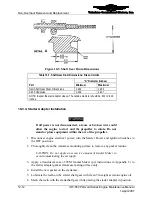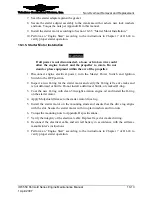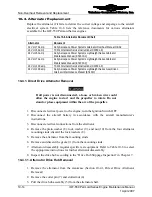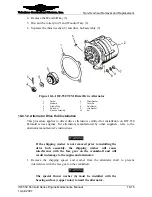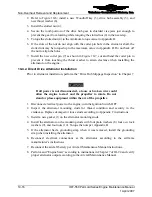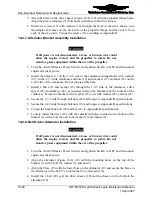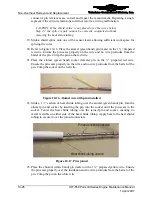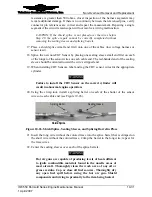
Non-Overhaul Removal and Replacement
Teledyne Continental Motors, Inc.
TM
10-22
IOF-550 Permold Series Engine Maintenance Manual
1 April 2007
10-5.
Engine Low Voltage Harness Lead Wire Repair and Sensor
Replacement
The low voltage harness is made up a several types of lead wires and sensors which
include Exhaust Gas Temperature (EGT) Sensors, the Cylinder Head Temperature (CHT)
Sensors and the Manifold Air Temperature (MAT) Sensors. The non-EGT sensors are the
CHT Sensors and the MAT Sensors. The fuel injector solenoids also are hardwired to the
engine low voltage harness.
Faults detected in the EGT, MAT, and CHT sensors constitute faults in the engine low
voltage harness and require lead wire repair or sensor replacement. If a wire in the engine
low voltage harness is damaged, it may be repaired or sent to the factory or an authorized
service center for repair.
However, the EGT Sensor lead wires are K-type thermocouples and have chromel and
alumel conductors whereas the remaining engine low voltage harness conductors are
copper and referred to as “Non-EGT” lead wires. Due to physical differences, separate
repair procedures are provided:
NOTE: Sensor/Wire Splice Kits for EGT and Non- EGT wiring are
available from TCM: Select the proper splice kit and follow the
respective procedure when repairing lead wires and sensors on the
Engine Low Voltage Harness.
CAUTION: Use the proper splice kit for EGT sensors or lead wires.
Using an EGT Splice Kit on a non-EGT sensor or lead wire will
result in abnormal engine operation and may cause engine damage.
Engine low voltage harness sensors are field replaceable, provided the failed sensor or
wire is greater than 12 inches (30 cm) from the 50-pin ECU connector. To replace an
EGT sensor or repair the EGT wiring in the engine low voltage harness wiring, refer to
Section 10-5.1, “EGT Sensor and Lead Wire Replacement.” To replace a Non-EGT
sensor or repair the copper sensor wiring in the engine low voltage harness wiring, refer
to Section 10-5.2, “Non-EGT Sensor and Lead Wire Replacement.”





